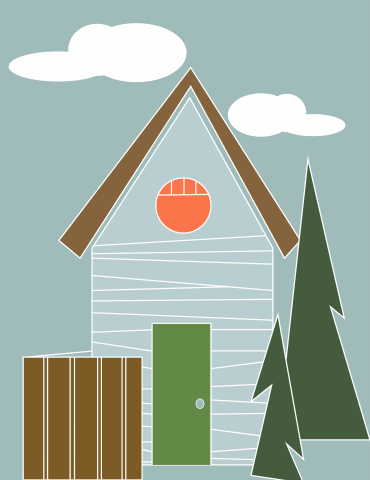With the ever-growing popularity of tiny houses, students are becoming increasingly interested in the benefits that such a home may offer them. Because of this growing interest, one local company hopes to bring tiny houses to the people of Saskatoon, including students at the University of Saskatchewan.

From Mar. 9-12, J&H Homes, a Saskatoon-based business that builds ready-to-move homes for customers from the Canadian prairies and northern United States, unveiled their new tiny homes division to the city of Saskatoon. Although the city does not yet have special zoning for tiny houses, consumer demand may make living in a tiny house a reality sooner than expected.
Jenny Jeffery, marketing director for J&H Builder’s Warehouse, notes that tiny homes have steadily increased in popularity over the years.
“Tiny homes are popular for different reasons, depending on how they are being used. In general, people are excited about tiny homes right now out of curiosity. You can’t help but ask yourself whether or not you could live in a tiny home when you see them. Used as a primary residence, tiny homes are growing in popularity partly because the high cost of regular homes [has] priced many people out of the market,” Jeffery said, in an email to the Sheaf.
Jaylene Murray, a PhD candidate from the School of Environment and Sustainability, believes that building tiny homes is a great opportunity for the city.
“This would be a great way for Saskatoon to demonstrate that Saskatchewan residents are serious about decreasing their environmental footprint and living more sustainably,” Murray said, in an email to the Sheaf.
Jeffery, agreeing with Murray, feels that tiny homes are a more sustainable option.
“There is a real movement to live more simply and not accumulate stuff — to live lighter. Living in a tiny home makes a statement in this way, and many who consider living in a tiny home go one step further by decreasing their carbon footprint rather than just decreasing the physical footprint of their home, by going off grid with their tiny homes,” Jeffery said.
According to J&H Homes, tiny homes are typically considered to be any home under 400 square feet. Jeffery explains that with many different options and designs, tiny homes can be completely tailored to the owner.
“Custom-built tiny homes can be started very quickly as well and take an average of two months to build,” Jeffery said.
Murray related that, for the more environmentally conscious student, the homes can also be tailored to be more environmentally friendly.
“If constructed with the appropriate materials and built so they are self-contained units with their own energy production, tiny house[s] can be very environmentally friendly. Composting toilets and water collection are additional features that would further improve the ‘environmentally friendliness’ of these homes,” Murray said.
Not only environmentally friendly, tiny houses are also very economically friendly, and thus Jeffery believes that a tiny home could be a great living option for students.
“Students who are just entering the housing market will find that tiny homes are an affordable option for first-time home buyers. Students who do not have families yet or couples without children are generally better candidates for the tiny-home lifestyle,” she said.
While tiny homes are not yet widespread, Jeffery believes that they will become part of the new norm.
“There are groups of people working on building tiny-home communities around Saskatoon right now, so yes, tiny homes are likely something that will be more common in the near future.”
—
Lauren Hope
Graphic: Lesia Karalash / Graphics Editor